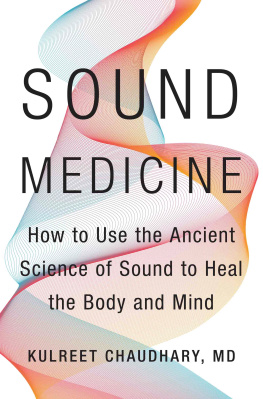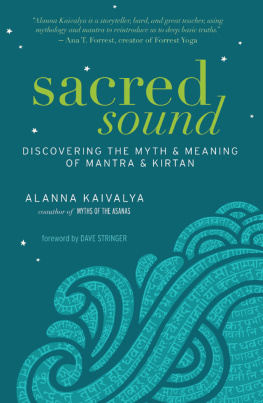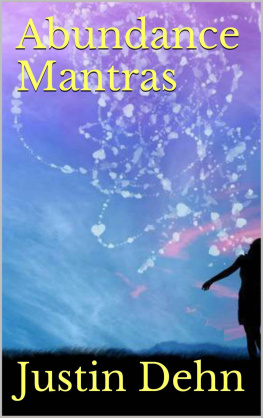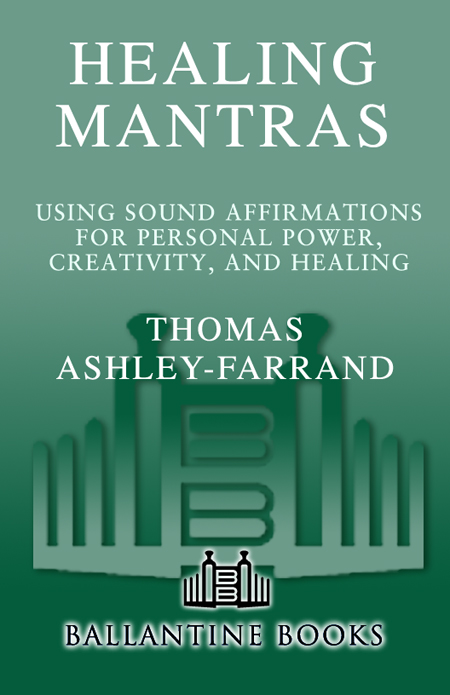Many people have contributed to this work in direct and indirect ways. I want to acknowledge them here. First, I want to thank my agent, Stephany Evans of the Imprint Agency West, for her vision and confidence in this project right from the start. Her assistance has been invaluable throughout. I also want to thank literary agent Patricia Collins for her recommendation of my work to Stephany Evans.
Leslie Meredith, my editor at Ballantine Wellspring Books, has my gratitude for recognizing the value of this project immediately and framing a method for its fulfillment. She and her associate Cathy Elliott are performing a service of great value to authors and readers alike.
My thanks also goes to Stephany Evans and Mitch Sisskind for their help in the final preparation of the manuscript.
It is appropriate that I thank Michael and Wendy Weir for their constant unwavering support for this and other writing projects as they took shape. In the same spirit, I want to thank Dr. Doe Lang, author of The Secrets of Charisma, for her long-term and unflagging encouragement of my writing efforts.
Professor Marilyn Shaw, a true healer and wonderful teacher of healing, brought me to Chaffey College and introduced me to a group of students who are truly serious about learning and practicing various healing methods. I am grateful to her and to them.
Finally, last but first is my wife, Margalo Ashley-Farrand. It took her ten years of gentle persuasion to bring me to write my first book. For her support of and involvement in my writing projects, I am exceedingly grateful.
Introduction: In the
Beginning Was the Word
I n spiritual and religious traditions all over the world, spiritual states are equated with light. A common spiritual objective is enlightenment. In the everyday language of spiritual development, we seek light on the path so that we may safely make our way. For centuries, artists from diverse traditions have made use of light in depicting great spiritual teachers. A clear indicator of spiritual power, light surrounds the priests of the Ark of the Covenant and creates the nimbus of the saints, and halos of Christ and the Buddha. In the first few verses of Genesis we read, And God said, Let there be light, and there was light. Yet if we imagine that light is the highest expression of spiritual power, we are mistaken. The spirit is created and animated not by light, but by sound.
Looking more closely at Genesis we see, God said The light of divine creation was initiated by sound. The speech of God, according to Genesis, was the source of the spiritual light to which we all aspire.
The New Testament Gospel of John, which was written thousands of years after Genesis, opens with the verse, In the beginning was the Word The beginning was not light; rather, it was sound in the form of the divine speech. Neither the Old Testament nor the New Testament contains a verse such as And God made light to shine. Rather, God creates the phenomenon by speaking of it. The primary mechanism of creation is sound.
In the wisdom of the ancient East, we find the same teaching. The whole universe comes about when God decides to manifest reality through the power of divine speech. In some Eastern texts, this power is referred to as Saraswatithe Word.
Sir John Woodroffe's The Garland of Letters includes a translation of a scripture called the Sata patha Brahmana, written many thousands of years ago. Volume 6 of that scripture opens:
In the beginning was God with power through speech. God said, May I be many may I be propagated. And by his will expressed through subtle speech, he united himself with that speech and became pregnant. Prajapathi and Saraswati were then created. And Prajapathi is called the progenitor of all beings.
This statement sounds astonishingly similar to the idea of creation expressed in Genesis and the opening text of the Gospel of John.
A Brief Vedic Cosmology
Vedic religion, handed down for millennia through an oral tradition before the advent of writing, presents a concise summary of how the cosmos came about. Creation began with Being, a state so sublime and so different from anything we can conceive of that it can only be expressed in metaphors, allegories, and pictures. One of the most common representations of Being is the Hindu divinity Narayana, who floats in a sea of inky black. From the solar plexus of the sleeping Narayana springs another entity called Brahma.
As Narayana sleeps and Brahma is formed, the universe is conceived as a divine idea. Unmanifest, this universe is vague and unformed. But Being has moved to Mind, which is Brahma. This mind of Brahma, however, is not static but dynamic. It soon experiences Desire, which is quickly followed by Will. Desire and Will cause Brahma to call upon his powerSaraswati, the Divine Speech of manifestation. Saraswati is described as a feminine principle. She is the Word as understood in the Vedic tradition. When Brahma calls upon his power, when he calls upon Saraswati, the universe comes into being with all the forces that will animate it for billions of years to come.
The process of creation, then, is described through the images of a brief narrative:
First, God as Being
From Being comes Mind
From Mind comes Desire
From Desire comes Will
From Will comes the Word
From the Word comes everything else.
Other Eastern texts express the same idea. Kuan Yin in Chinese Buddhism is referred to as the divine voice, which calls forth the illusive form of the universe out of the seven elements. The Vedas speak of the divine sound-current Shabda Brahma, which permeates all and is a key to creation.
References in sacred texts to the power of sound are not limited to creation myths. In the Old Testament book of Exodus, the sound of trumpets is said to bring down the walls of Jericho. In the East, the trumpet sound is a symbol of great spiritual power associated with insight and elevated consciousness. The sound of the trumpet is thought to be heard or perceived through the third eyea point between the eyebrowswhich can have direct communication with the Divine.







